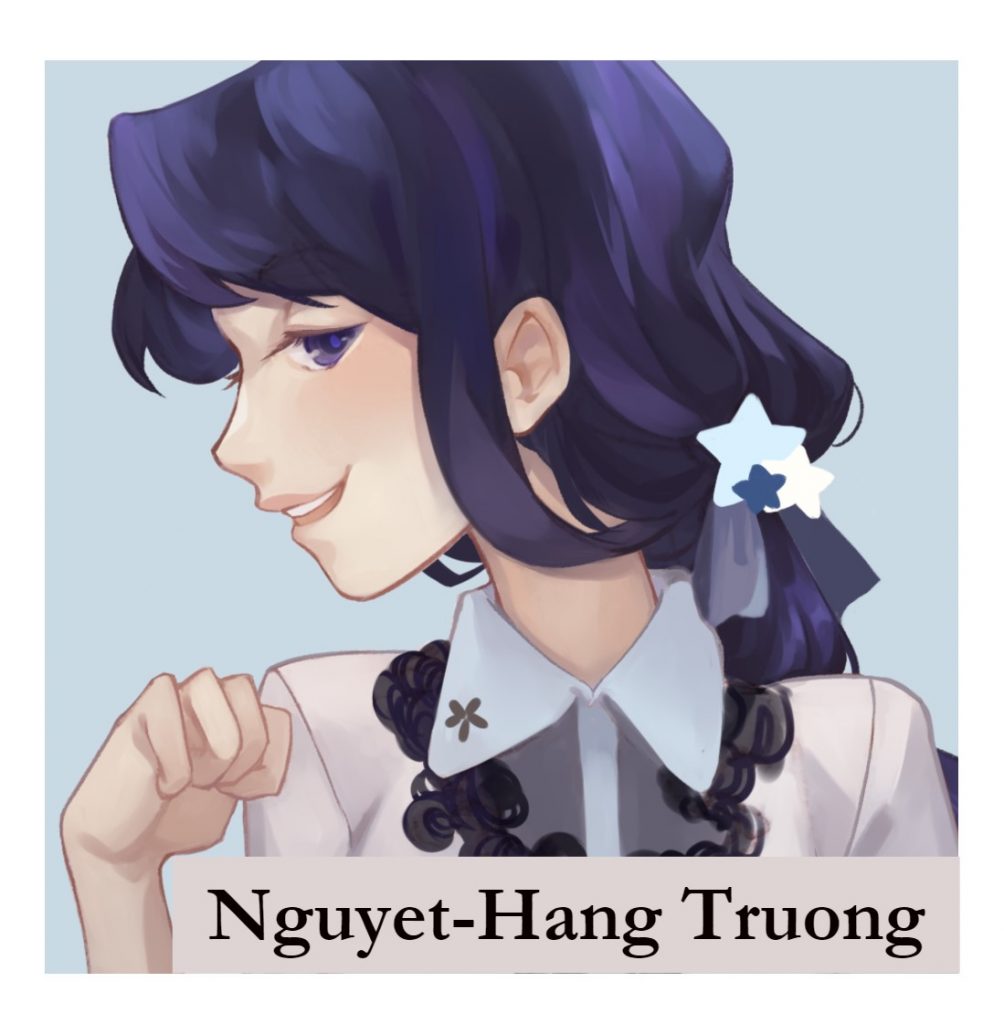
Nguyet-Hang is a Vietnamese-American who was originally born in Michigan but grew up moving across the United States. She has lived in areas near San Jose, California and Austin, Texas, but is currently residing somewhere in the East Coast where she is indulging in sweets and candies galore. Nguyet-Hang loves to read in her spare time, play video games (her current video game addiction is Granblue Fantasy), and collect washi tape and stickers. Nguyet-Hang discovered Legacies on Twitter. This is her first publication and she excited to see the finished piece along with everyone’s works!
Below are the responses from Nguyet-Hang Truong’s interview with Legacies Staff:
How did you get into illustrating or writing?
My dad studied automobile design and when I was little I watched him draw cars and various other content with his markers and oil pastels. Those moments influenced me to draw, and my family was understanding and encouraged my exploration into illustration; I wouldn’t have reached this point without their support.
What inspired you to contribute to the project? (Why did you want to contribute to this project?)
Contributing towards collaborative anthologies has always been one of my dreams, and this year I had set out to make it happen! I was very fortunate to come across the open call announcement for this zine. Similar reasons as above, the chosen topic for this anthology resonated with me deeply and I wanted to use this journey to better understand how I identify myself as Asian-American.
How would you describe, or summarize, your submission?
A lady wearing an “ao dai”, a Vietnamese traditional dress, embroidered with cultural elements where an ao dai can be worn.
What was the hardest things to write/draw about? (I.e. revisiting a trauma, self-realization, etc.) In other words, did you struggle to write/draw a certain aspect?
Painting backgrounds is something I’ve only recently started doing, and I had some difficulty planning the types of furniture and props to place in the piece. Conceptualizing the lady and the outfit design was a smooth process, so then I decided to build everything else around her haha
Why did you choose to write/illustrate your specific submission? (What was the significance of your submission?)
One of my favorite things to draw and illustrate are articles of clothing, and I wanted to include that passion with my submission.
What were the most important things you wanted to hit on in your submission? (What did you want to highlight?)
I wanted to display the influence Vietnamese traditional wear has had in my life, a tradition that has merged with a different culture to create new experiences and customs.
What do you hope readers/people will gain from reading/seeing your work? (What do you want people to take away from your work?)
I hope that viewers will feel the serenity that the lady wearing the ao dai is experiencing. I painted it to capture a moment in time when she was at peace and appreciating the beauty of the dress. I’m most proud of the designs on her dress so I also hope that viewers can enjoy the details too. Thank you so much to everyone for supporting the anthology!
What does writing/illustrating for this anthology mean to you?
Having the chance to illustrate for this anthology is a once in a lifetime experience! I have the opportunity to create content for a subject close to my heart and to share and connect with others with similar struggles.
What food/drink most reminds you of home/childhood? Why do you think food is so important to Asian American culture?
There are so many memorable dishes to decide from, but I would have to choose “nuoc thit kho trung”, a hearty dish containing caramelized pork and eggs that’s usually paired with rice. My mom is usually the one who prepares nuoc thit kho trung for our family. It’s great seeing how each family member caters the dish to their personal taste after scooping out individual portions. I love the sweet-saltiness of the broth so I tend to enhance that by drowning my rice with soy sauce and mix it in with the caramelized eggs. My parents instead prefer to dip the morsels into their sauce dishes (either soy sauce or fish sauce) before scooping up the rice and eating them both. Eating together and knowing each other’s food preferences and nuances helps us better understand one another and bond together as a family, despite any differences in culture or generations, which is why I think food plays such a significant role in culture.
